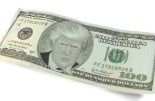Payden & Rygel: Is US monetary policy tight?
Payden & Rygel: Is US monetary policy tight?

Yes, the Fed has hiked its policy rate to the highest level in 15+ years and kept rates elevated for almost a year. But is monetary policy tight? The recent run of economic data--and common sense--suggests that policy may not be as tight as many believe.
The Fed raised its policy rate by over 500 basis points in just over a year and finished hiking almost a year ago.
Real (inflation-adjusted) interest rates are much higher than a few years ago. For example, 10-year real yields are at ~2.2%, their highest rates since 2009.
Yet, based on the data we’ve seen so far for Q1, U.S. GDP growth may have reached 3% at an annualized rate in the first quarter of 2024. Core inflation readings are still elevated year over year and have quickened month by month, suggesting core inflation may 'stick' into the 3-4% range. The unemployment rate remains near its cycle-low, with layoffs spending the last three months in a tight range of nearly 200k. Firms have added nearly 300k jobs per month for 12 months.
So, is monetary policy tight?
The obvious retorts are mostly banal. 'Well, monetary policy works with long and variable lags,' people say. We’ve used the phrase ourselves. But, given the recent run of economic data, the more interesting idea is to explore why monetary policy might not be acting as strongly as a brake on economic activity as policymakers imagine.
We can think of a few ideas:
The Fed funds rate is not the appropriate rate to monitor. Although the Fed funds rate is the policy target, few market participants actually transact in the Fed funds market. Longer-term rates, like 10-year Treasury yields, might be more important for most investors and institutions. Longer-term rates are up since 2022, but remain far below the fed funds rate.
Credit spreads are narrow, defying the 'tight money' narrative. Like the above, credit spreads reflect the 'risk premium' above government bonds corporations or households must pay to borrow. Narrowing credit spreads reflect easier financial positions, not tighter ones.
The level of rates tells us little about lending and risk-taking. Rates alone tell only part of the story. If someone can borrow at 5% and earn double-digit returns elsewhere, then a 5% rate is not restrictive.
The 'neutral rate' might be higher than before. Related to the above, we could compare rates to the neutral rate instead of looking at the absolute rate level. If the economy is operating at higher productivity, the neutral rate may be higher. The SEP also shows that the median FOMC member is seeing a higher long-run interest rate. If true, then 5% fed funds may not be as restrictive as previously thought.
The Fed’s balance sheet matters more for markets than the Fed funds rate. The Fed’s balance sheet may play a bigger role in financial conditions than many investors think. For example, when the ON RRP balances rose to nearly $ 2.5 trillion in 2023, that was liquidity moving out of the banking system and onto the Fed’s balance sheet. More recently, liquidity has improved as money flooded back into the banking system (the ON RRP balance is down to under $ 400 billion).
Higher rates mean more income for some households and businesses. Households and some corporations have 'locked in' borrowing costs (e.g., the 30-year fixed-rate mortgages for households and 5 or 10-year maturity issuance for corporations) but enjoy the benefit of higher yields on savings.
In short, we don’t think investors should blithely conclude that the policy is tight enough merely on the Fed funds rate level.
Whether or not monetary policy is tight matters because fears of 'something breaking' may be overdone (we’ve been saying that for a while!), the economy may have room to run, inflation may yet be reined in, and rates need not shoot lower. If anything, rates may still need to move higher. We think the most likely scenario is that the Fed remains on hold for most of the year, but we place a 15% chance on the “no landing” scenario in which policymakers hike again over the same timeframe.
If the economic data continues to remain resilient, expect investors and policymakers to begin openly wondering whether policy is tight enough.










